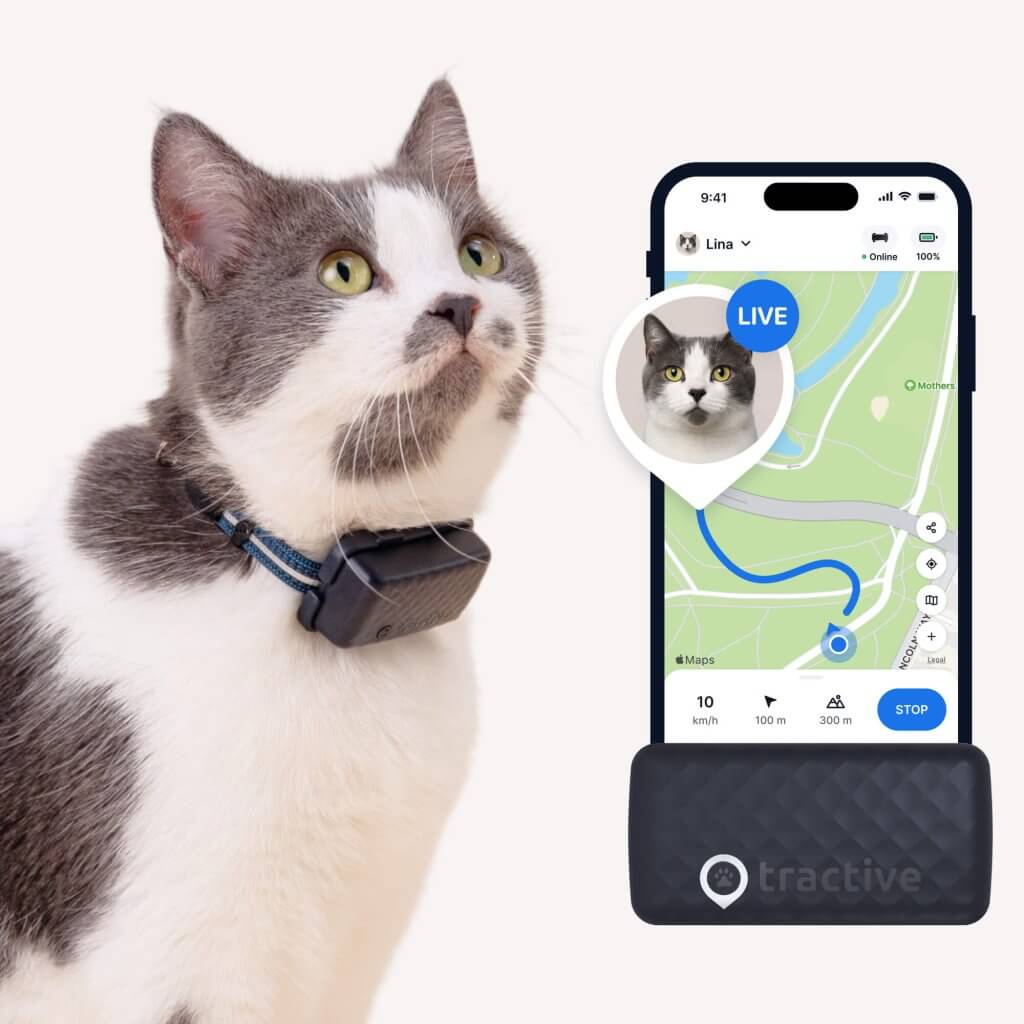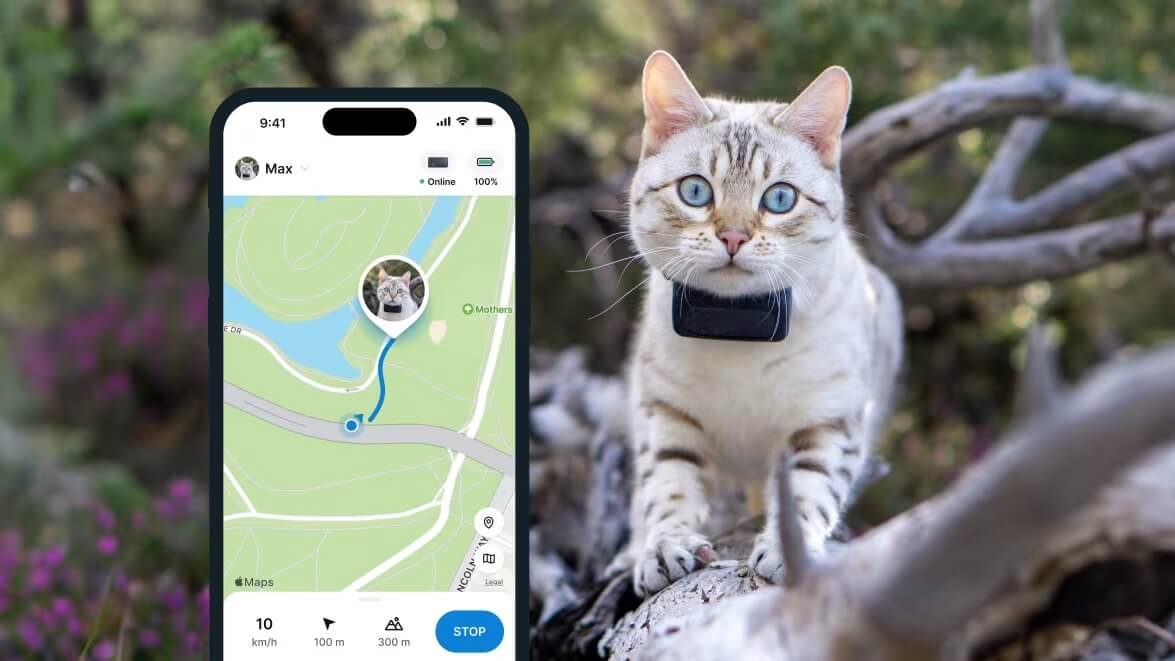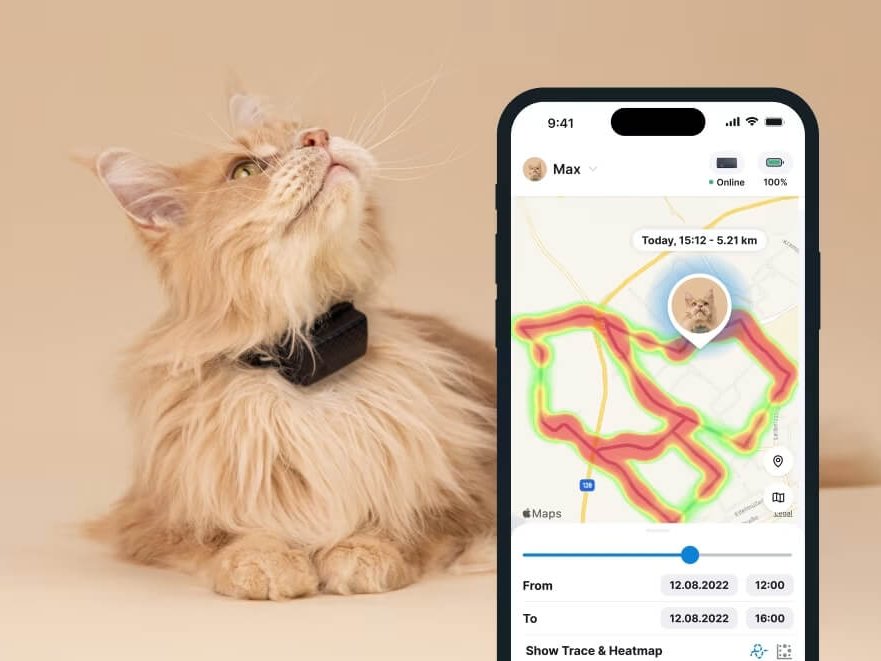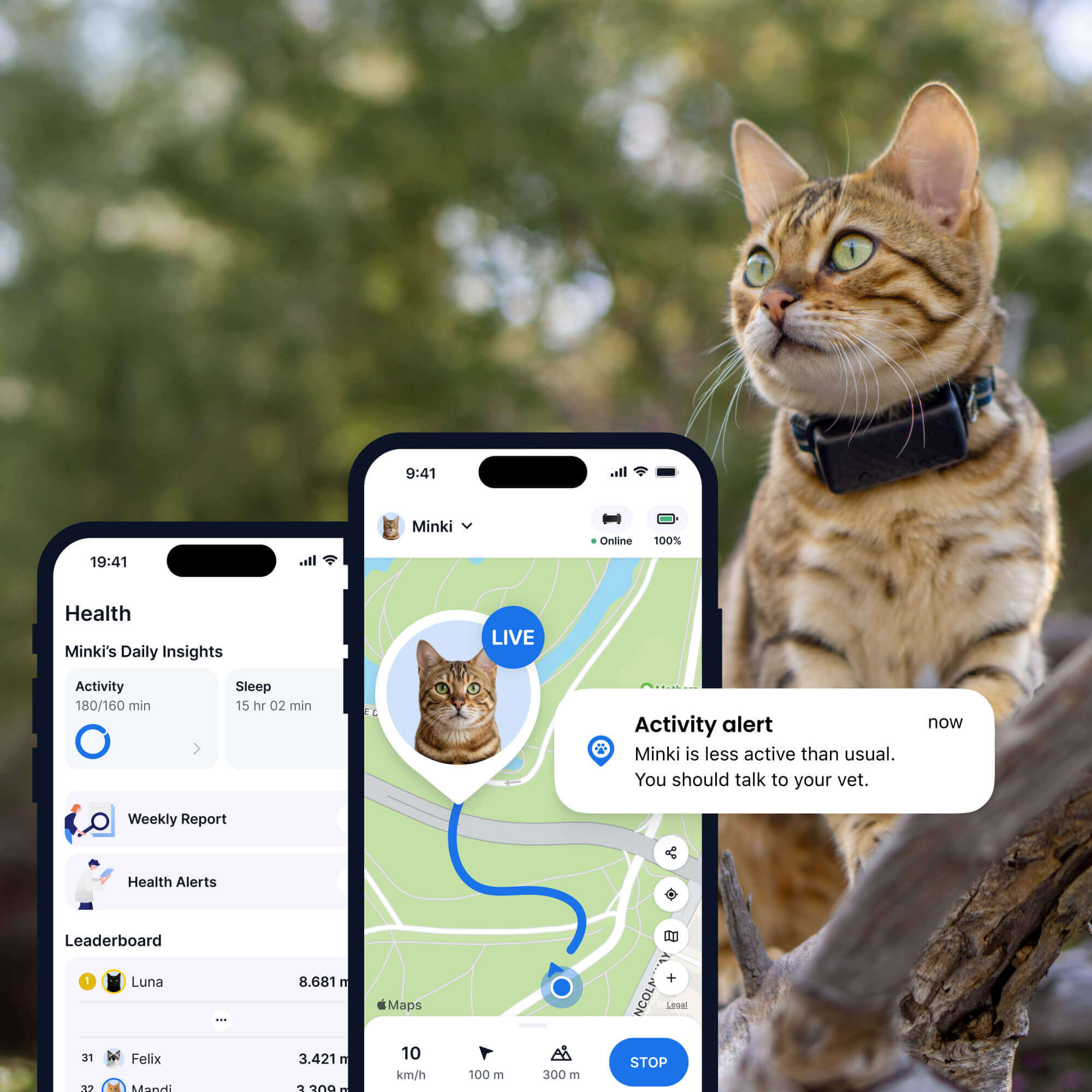Cat Lice: How To Handle It Like A Pro
Is your feline buddy scratching themselves to death - but ticks or fleas aren't the cause? You might be dealing with a case of cat lice. Here's how to deal with it.

Unless you’re monitoring your cat’s movements 24/7, you’ll never quite know just who (or what) they’re running into on their adventures. Here’s how to figure out if you’re dealing with cat lice – and what steps you can take to prevent another case of it down the line.
Key Takeaways
Cats usually get lice from other cats or from contaminated surfaces like shared bedding or grooming tools. Meaning outdoor cats are more likely to get them.
If your cat has lice, your vet will give them special treatments like topical medicine or medicated shampoo. You will also need to deep clean their bed and toys to get rid of the nits (lice eggs).
If you have a Tractive smart cat collar, you can check your cat’s Heatmap to see where they like to hang out. This can help you figure out if they’re spending time with other cats that might have lice. (So you can try to avoid those spots.)

Find out where your cat spends their time.
Read more- Can cats get lice?
- What are the signs of lice on cats?
- Can humans pass on lice to cats? Or vice versa?
- How do lice live on cats?
- Are some cats more likely to get lice than others?
- Where is my cat picking up lice from?
- How your vet might diagnose a case of cat lice
- How to prevent cat lice from spreading – at home & beyond
Can cats get lice?
Lice infestations in cats are on the uncommon side – less common than infections by pesky critters like fleas and ticks. These small, wingless insects latch onto your cat’s skin and feed on their blood. Left unattended, a bad case of cat lice can end up with your feline buddy losing their fur, ending up with irritated skin, and opening up their risk of worse skin infections.
What are the signs of lice on cats?
Much like the signs of lice in dogs, watch out for signs like your cat:
- Scratching themselves more than usual,
- Losing some hair from the excessive scratching,
- Rubbing their face on the floor
- Red, dry, scabby skin
- Matted fur
- Sores or lesions from biting and scratching
- Showing visible lice in their fur
- Seeming more restless than usual
Can humans pass on lice to cats? Or vice versa?
Thankfully, nope, humans can’t pass lice on to cats – nor can cats pass lice on to humans.1 The specific species of lice that infects cats is Felicola subrostrata, which tends not to move from one species to another. (Much like all lice.) So nope, if you have head lice, your cat isn’t likely to get it from you. Likewise if your dog has lice instead. These critters tend to have their favorite “victims” – and stick to them for good.
How do lice live on cats?
Cat lice tend to spend their entire life cycle latched onto your cat’s skin – primarily in three stages. Adult female lice lay eggs (called nits) in your cat’s skin, usually at the base of their hair shafts. After hatching, the nits emerge as “nymphs” and go through several stages of “molting” until they grow into adult lice. These newly-grown adult lice continue to lay eggs and infect your cat with more lice.
This entire process takes only around 3-4 weeks – which is why it’s so easy for lice to spread.
Are some cats more likely to get lice than others?
Thankfully, regular flea and tick preventives can also help prevent lice from spreading into your cat’s skin – and potentially infecting other cats. But even so, you might be more likely to see lice infecting:
- Older cats that might not be able to groom themselves as well as before.
- Sick cats
- Long-haired cats
- Feral cats that are used to living by themselves without human contact
- Stray cats that might not have been living in the cleanest of environments
- Shelter cats that might be living in crowded, unhygienic conditions with other cats
So if you’re considering adopting a cat (or multiple cats) to bring home, make sure you check with the shelter staff whether they include a flea and tick preventive as part of their fees.
😼 Importantly, outdoor cats are several times more at risk for coming in contact with pesky critters like lice – especially if they like to hang out with other cats across their outdoor territories.
“Cats that go outdoors are at a much greater risk of picking up fleas, ticks, or even lice.
These parasites can cause itchiness or other problems for your cat and members of your family.“
– VCA Canada2
💡So if you’ve got an outdoor cat at home, it makes sense to keep track of where their territory spans. Meaning, are there any “itch”-prone zones around town where they’re coming in contact with other cats – and picking up an infection. A smart cat collar with real-time GPS tracking can help you do this with just a glance at your phone.

Track your cat wherever they go
Get real-time location information, wherever they go. Find out when they go somewhere they shouldn’t, with Virtual Fences. And discover their favorite spots with Territory.
Where is my cat picking up lice from?
Primarily, cats pick up lice from other cats, with whom they’re having direct contact – both indoors or outdoors and contaminated surfaces, including lice-riddled grooming tools, bedding, or even food and water bowls.
In the case of an outdoor cat, it’s pretty obvious they’re running into other cats across their territory. Or being fed by a kindly neighbor who might also have cats – risking the spread of infection. But if you’ve got an indoor cat that stays 100% indoors – and you don’t have any other cats at home – you might want to do a little digging. (Specifically, are there any spots in your backyard fence that need patching? Your indoor cat might not be so much of an indoor cat after all!)
How your vet might diagnose a case of cat lice
Now if your cat’s been scratching themselves raw or losing fur, it’s a good idea to bring them over to your vet for a full checkup. If you’ve got multiple cats at home, bring all of them over. (No matter if they’re itching or not!)
Your vet will start with a thorough physical exam of your cat’s fur – looking out for nits and adult lice in their hair shafts. They might also run your cat’s fur with a fine-toothed comb to collect samples of lice or nits to inspect under a microscope.
What your vet might prescribe
In general, it’s a good idea to stick to vet-approved products – no matter how pitiful your poor cat might seem during this time. All too often, products like insecticides contain harmful chemicals like permethrin, which can be toxic to cats.
So your vet might prescribe your cat:
- Lice-specific topical treatments, which you can apply as a few drops on your cat once a month – and which can also help prevent other infections
- Medicated lice shampoos
- Flea and tick control treatments
- A bath in lime-sulfur dip every 2 weeks for a total of 3 treatments
Make sure to follow the full course of treatment – even if your cat seems less itchy. Many of these treatments can take a while to be 100% effective, because none of them can entirely get rid of nits. Rather, you’re waiting out the cat lice life cycle for the eggs to emerge as nymphs to kill them completely. So be prepared to invest at least 1-2 months helping your cat rid themselves of their lice without being re-infected.
How to prevent cat lice from spreading – at home & beyond
Start with a thorough deep clean
Including your cat’s:
- Bedding and sleeping areas, like your cat’s bed and blanket
- Food and water bowls
- Grooming tools, including combs and brushes
- Toys
- Any favorite pieces of clothing you leave behind when your cat’s alone at home
- Favorite couches or sofas around the house
- Your bed and blankets – especially if your cat likes to sleep in bed with you
- Any other items your cat likes to use, play with, or interact with on the regular
💡 Tossing your cat’s bedding, favorite clothing, and any infected blankets in the dryer can actually help kill any nits as well. Plus, make sure to wash your hands thoroughly after cleaning these items.
Don’t skip out on regular grooming
If you’ve only been brushing out your cat’s coat every so often, now’s the time to make it a regular habit. (Even more so if you have a long-haired cat at home, since it’s more difficult to see visible nits or lice in their fur.) Regular brushing can help prevent matting and tangling – all of which can make it easier for lice to infect them. Grooming on the regular can help you pick up nits and lice even faster, so you can get your cat to your vet and be treated right away.
Don’t skip out on monthly flea & tick treatments
Cat lice is thankfully growing rarer by the day, especially since regular flea and tick treatments can also help curb their spread. With a monthly preventive, you can keep your buddy pest-free without compromising on their freedom.These include:
- Flea dips
- Medicated baths
- Special anti-pest powders
- Some combination products, which target multiple pests
⚠️ Before you begin any preventive treatment, make sure to get the green light from your vet first. You’ll have to pick the right product for your cat’s age, weight, and what pests you want to target – and understand any safety concerns as well.
Use a smart cat collar
Finding out your cat has lice is never fun, and figuring out where they picked up those unwelcome hitchhikers can be tricky. A Tractive smart cat tracker can be a surprisingly useful tool for both pinpointing the source of the infestation and helping you catch the signs of an infection sooner.

Strapped to your cat’s collar, you can now:
Map out their territory (and where they’re running into lice)
Lice are often spread by direct contact with other infested animals. So, where is your cat meeting its “friends”? The Tractive tracker’s Location History and Heatmap features are perfect for mapping your cat’s territory. By reviewing where your cat spends the most time, you can pinpoint areas – like a neighbor’s porch, a communal feeding spot, or a particular shrub where they often meet other cats – that might be the source of the lice.

If a specific area seems to be a hotspot for loitering, you can use your Tractive device’s real-time GPS tracking to keep a closer eye on them and confirm those high-traffic zones, helping you take steps to limit their access.
Pick up on health issues faster
A lice infestation can make your cat very itchy and uncomfortable, which often leads to changes in their behavior. That’s where Tractive’s Health Monitoring features become invaluable. The tracker monitors your cat’s activity and sleep patterns, establishing a baseline for what’s normal. If your cat is suddenly very restless at night, constantly scratching, or becoming more lethargic due to irritation, the Health Alerts will notify you of these significant changes. Catching these subtle signs of discomfort or illness early means you can get your cat to the vet sooner for treatment and a faster recovery.




